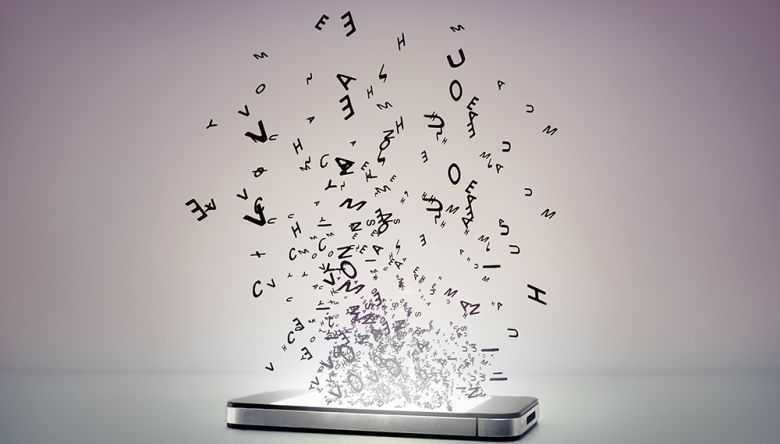Want to decode all those confusing cellphone tech terms? We’ve got you covered.
Cellphones are constantly being improved and fitted with more advanced features – and while the tech gets cooler, the language can get more confusing. Here’s a glossary of the technical terms you may encounter when comparing cellphone deals.
A
ANDROID
Android is a smartphone operating system (OS) owned by Google. It is the most popular OS worldwide. Many different brands (Samsung, Sony, LG, etc) use the Android OS on their devices. The latest version is Android 7.0 Nougat.
APPS
Applications or ‘apps’ are software or programmes for mobile phones. You can download apps (such as Angry Birds or Instagram) from your phone’s mobile store (Google Play Store for Android, or the Apple App Store for iPhones). Businesses, like banks for example, often have their own apps that deliver their services in the easiest way possible.
B
BANDWIDTH
Bandwidth refers to data-rate or data transfer speed – how fast data can travel from one point to another. Different applications require different bandwidth. A WhatsApp message may use a very small amount of bandwidth, but attempting to download a large video file will require a lot more.
BATTERY SIZE
You will often see the term ‘mAh’ in relation to battery size. This is an abbreviation for ‘milliampere hour’. It is a unit of electric charge, and it’s the most common way to express the capacity of small batteries. Simply put, a 1000mAh battery can supply 1000 mA for one hour. So the higher this number is, the longer the battery should last. Bear in mind that other factors, such as screen size and brightness, can affect battery life.
BLUETOOTH
Bluetooth enables mobile devices to send and receive information wirelessly. Through Bluetooth, your phone and another device – a phone or your laptop, for example – can sync with each other and transfer info without needing to use mobile data or airtime. Bluetooth is also available in many newer cars, enabling you to talk completely hands free.
C
CAMERA
Most cellphones these days have back and front cameras. The front camera has generally lower specs, and often no flash, and is designed for selfies. The back camera has much better capabilities. For a more in-depth look at cellphone cameras, refer to our previous story on the latest in camera tech.
D
DISPLAY RESOLUTION
A phone’s display resolution refers to the number of horizontal and vertical pixels (or dots) on the screen. For example, a pixel count of 1600×1200 means 1600 horizontal pixels and 1200 vertical pixels. The more pixels the screen has, the more information is visible on the screen, and the clearer it appears. High definition screens generally have a resolution of around 1920×1080 pixels.
G
GPS
The Global Positioning System is a direct connection to satellites that determines the exact geographical position of your phone. Most smartphones today come with a built-in GPS system, enabling you to use apps like Google Maps and Find my iPhone. The GPS also helps apps on your phone find nearby restaurants, clothing stores, and so on.
I
IOS
iOS is Apple’s operating system, and is native to all of Apple’s mobile devices (iPhone, iPad and iPod Touch). It is the most popular operating system in the world for tablets.
M
MOBILE CLOUD STORAGE
Mobile Cloud Storage refers to the storing of your information (photos, email, documents etc) in the Cloud, providing you with access to the data from anywhere. Mobile cloud storage additionally allows for the syncing and sharing of data across multiple devices. It’s a handy way to back up your device – but be aware that allowing your device to automatically back up to the Cloud can use a huge amount of data.
P
PROCESSOR
The majority of smartphones have either an Octa-core or Quad-core processor. Octa-core has eight processor cores, while Quad-core has four. However, the number of cores does not determine the speed and power of the smartphone – this is more dependent on how they are set up. So a Quad-core processor may run twice as fast as an Octa-core because each core has a higher performance rate.
R
RAM
Ram stands for ‘Random Access Memory’. The amount of RAM a cellphone has directly affects its overall performance. If you like to run lots of apps at once, you’ll want a smartphone with a lot of RAM. Most cellphones have between 1GB-4GB RAM.
S
SMARTPHONE
The smartphone is the new generation of mobile phones optimised for using mobile internet and applications. It typically has touch-screen features and allows you to surf the internet and download games and apps.
STREAMING
Streaming is the one-way transmission of video and audio content across the internet. When streaming video, the video is not downloaded onto your device, but is viewed directly online. Streaming is a good option for watching media online, as it can be lighter on data than downloading – but you must be aware of your quality settings. The better the quality, the more data streaming a video (or music, etc) will use.
W
WIDGET
A widget is a third-party web application that you can view from your home screen. Android examples include the clock and weather forecast.
WIFI
WiFi is the wireless connection you get through a local network (eg your internet hub at home, or in a coffee shop) rather than the mobile network (eg a 3G or 4G connection). Most cellphones are WiFi enabled, but not all tablets are.
#
4G
4G is the latest in wireless telephone technology. 4G networks have a higher capacity than 3G networks, making your mobile experience even better and faster. 4G is also often known as LTE, which stands for Long Term Evolution. If you love to surf the net, choose a phone with 4G or LTE capability.


